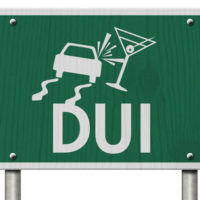How To Win A Circumstantial DUI Case In Port St. Lucie

Much like the events which take place during first 48 hours of a criminal investigation often determines its outcome, the events which occur in the first 48 hours after a DUI arrest, most notably the request for a chemical sample, often determine the outcome of the case. Typically, the conviction rate in breath or blood test cases is above 80 percent, and the conviction rate in refusal cases is below 50 percent. Despite the critical nature of this event, courts have consistently refused to allow defendants access to counsel during this stage.
If the defendant provides a chemical sample, prosecutors will use the state’s per se DUI law, which is a shortcut to conviction. But if the defendant refuses to provide a chemical sample, the state must rely on circumstantial evidence.
Circumstantial Evidence Before the Stop
During the initial “license and registration please” encounter between the police offer and the defendant, the officer may seem friendly and even affable. But in reality, the officer is already looking for evidence of intoxication to use against the defendant. Such evidence includes:
- Bloodshot eyes,
- Odor of alcohol,
- Slurred speech, and
- Unsteady balance.
Port St. Lucie police officers are especially watchful for these signs during DUI roadblocks, because they cannot use another common piece of evidence, which is erratic driving.
This evidence is very weak. At best, it only proves consumption of alcohol. It arguably does not prove legal intoxication, certainly not beyond a reasonable doubt.
Field Sobriety Tests in Port St. Lucie
So, to supplement this evidence, Florida police officers normally require the defendant to perform field sobriety tests. The National Highway Traffic Safety Administration has approved three field tests for this purpose, and an experienced attorney can point out the flaws in each of them:
- One-Leg Stand: The defendant must stand perfectly still, elevate one leg about 45 degrees for about fifteen seconds, and then put the leg down. Officers usually testify that the defendant “failed” this test based on minor technicalities, such as an almost imperceptible sway or holding the leg at a slightly incorrect angle.
- Walk and Turn: Much like the OLS, the WAT (a/k/a the heel-to-toe walk) is a divided attention test that has both mental and physical components. Test conditions are often an issue, because for example, it is much harder to walk an imaginary line heel-to-toe than an actual line.
- Horizontal Gaze Nystagmus: Conditions also affect this test as well, because it is very hard to follow a point by moving one’s eyes when the sky is dark and a police car’s lights are flashing incessantly nearby.
Some officers also use unapproved tests, like the finger-to-nose test, but these exams are usually either inadmissible or only admissible for limited purposes.
Defendants have a right to refuse to perform the field sobriety tests. Although they will almost certainly be arrested if that happens, the conviction rate is very low (usually about 35 percent). That’s because the prosecutor must rely on the weaker circumstantial evidence mentioned above, such as bloodshot eyes and erratic driving.
Count on Experienced Lawyers
Effective defense strategies are available in circumstantial evidence DUI prosecutions. For a free consultation with an experienced criminal law attorney in Port St. Lucie, contact Eighmie Law Firm, P.A. We routinely handle cases in Port St. Lucie County and nearby jurisdictions.
Resource:
tdcaa.com/journal/new-dwi-prosecution


